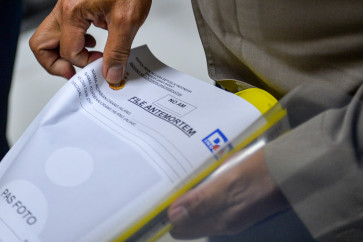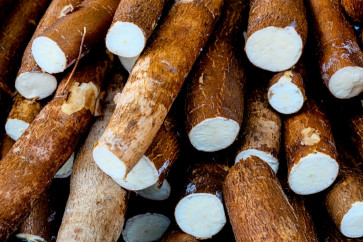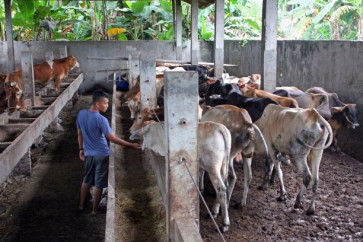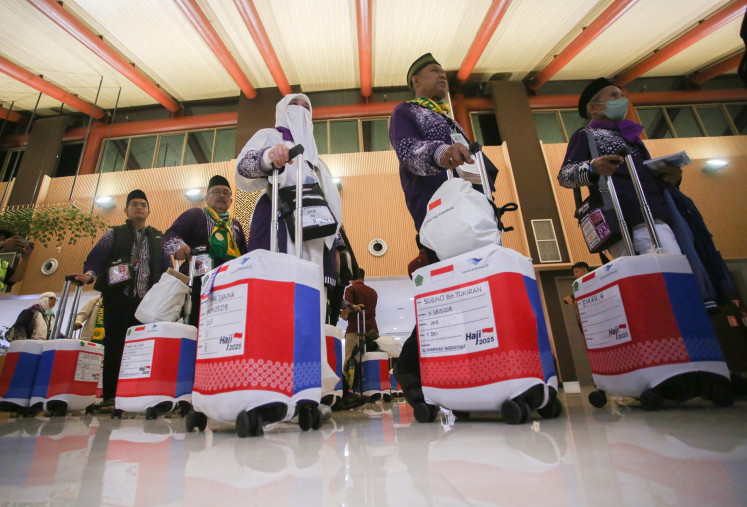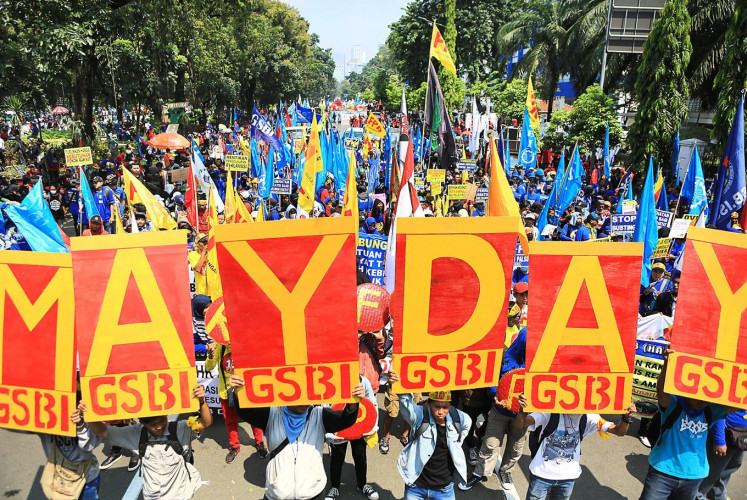‘Kompangan’, Malay-Islamic art
A show: A Kompangan performance involves percussion, dance steps and the recitation of verses of the Koran
Change text size
Gift Premium Articles
to Anyone

A
span class="caption" style="width: 398px;">A show: A Kompangan performance involves percussion, dance steps and the recitation of verses of the Koran.Men in both Muslim and traditional dress were playing percussion at a brisk tempo while reciting verses of the Koran and moving to Malay dance steps, to the cheers and applause of spectators.
This was the end of a cultural festival featuring hadra — also known as kompangan — groups in Jambi recently.
A blend of Malay and Muslim cultures, kompangan is a type of religious art performed by a team of 10 to 15 people with kompang, or tambourine-like drums. Each of the groups in Jambi has a traditional style of beating the drums, with at least 17 different strike repetitions known in the art.
Traditional kompang drums are made of dried cowhide attached tautly to wooden bands, some bearing small brass cymbals. They come in various sizes with a wide range of tones accordingly produced. Not yet locally made, they are purchased in Tegal, Central Java, at Rp 65,000 (US$7.25) — 150,000 each depending on the size and type of wood.
Kompangan was first introduced to Kampung Tengah in Jambi in 1933. Locals originally called it sambilan, an acronym of the names of its creators: Safaidin, Ahmad, Marzuki, Burhanudin, Ibrohim, Jalil, Ahmad Jalil and Nawawi.
Later, sambilan was performed to accompany a groom and his family to his new bride’s home and to
enliven a martial arts show in front of her home before the groom’s formal entry to the bride’s family in a ceremony called saloko, in which village elders recite Malay quatrains. The art has since also served to mark rituals and welcome very important guests.
Bunyamin Yusuf, chairman of the Hadra Anggut Association (IDHA) of Jambi province, says that around the 1980s Jambi residents showed renewed interest in hadra following the spread of groups of sambilan players throughout the regencies of Muaro Jambi, Merangin, Tebo, Bungo, East Tanjung Jabung, West Tanjung Jabung and Batanghari. “Only Kerinci regency has no such groups,” he added. However, the number of artists was declining then.
In 1999 when the Al-Hidayah Youth Al-Qur’an Recitation Club of Sungai Putri, Telanaipura district, held a hadra festival, Bunyamin Yusuf as the province’s chief instructor, with the support of several artists in the city, initiated and announced the establishment of the IDHA of Jambi city.
With the founding of IDHA in Jambi, many more hadra groups emerged. “About 67 groups have now been listed here,” he said. In 2001 the provincial IDHA was formally set up at the People’s Struggle Museum of Jambi, with Bunyamin Yusuf elected chairman. “Since then there are now more than 100 hadra groups from various regencies,” he said.
Although the demand for kompangan services in Jambi was low in the early 2000s compared to the outskirts of the city, Raden Rahmadi, 13, active in the art since he was five, says he has great passion for performing the religiously tinged music.
Learning from his grandfather, father and older brother, he has been practicing kompangan twice a week at a nearby mosque in the city. “Our group is called Istiqomah with members coming from Penyengat Rendah village near Jambi. Over 30 boys of various ages train here on Wednesdays and Sundays,” Raden said.
The survival of kompangan has so far relied on the fees received by the groups for their services during weddings or other family events. Normally, the groups are provided different sorts of food and paid Rp 150,000 to 250,000, which is spent on the instruments, costumes and members’ needs.
In view of such conditions, Bunyamin hopes that the government will pay attention to the promotion and preservation of this distinct cultural element of Jambi.
“Otherwise, our future generations will have no chance of witnessing this particular art of Jambi other than just learning about it in history books,” he said.

